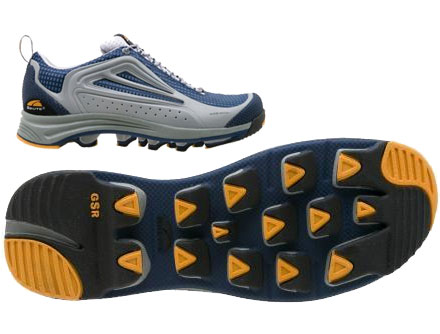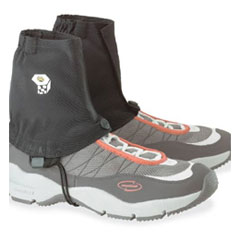 "Blisters & Bliss" is, by all accounts, the definitive guide to the West Coast Trail.
"Blisters & Bliss" is, by all accounts, the definitive guide to the West Coast Trail.
The best way to purchase it is direct from the authors – Dave Foster or Wayne Aitken – at their Official Website.
I recently exchanged a few emails with Dave, who was very helpful and more than happy to share a few tips about the WCT. Here is what he had to say:
Brett: "I'm not sure how familiar you are with the ultralight movement – but basically – our plan is to carry a ~18lb pack (including food & water) and do the trail in 5 days. with this light of a pack, we get the luxury of wearing trail running shoes vs. boots. i've done tons of hiking in washington and the homeland (uk), but very little beach hiking. how soft is the sand/beaches on the WCT – and would you consider trail runners to be problematic filling with soft-sand etc. my two thoughts to combat this are a) gaiters over the trail runners and b) a pair of sandskins ( http://www.sandskins.com/) to hike on the beach in. i'm not worried about water or mud – i hike for many many miles with soaked muddy trail runners. :)"
Dave: "I admire your move on the 18 lb pack. I think that's great. Beach hiking can be tough on the lower legs and feet. Blisters often build because of the repetitive steps. The soft sand lasts for intervals of 2 hours or so in a couple of places. Same problem, ie. no variety in the step can cause tiring of thighs etc. Sand and grit in your trail runners will be a problem but gaiters should remedy it."
Brett: "we're planning on setting out of gordon at 11am and making it to camper by evening (taking the high-trail as it will be high-tide at owen), perhaps squeezing in a back-trace to owen once we get down on the beach. how realistic is that? everything i read says people barely make it to thrasher – but they also seem to be carrying 80lb packs :)"
Dave: "Many hikers begin at Gordon and reach Camper late the first night. You should have no trouble. Hiking back to Owen Point without a pack is a possible option. You'll want to play this as a last minute decision depending on weather and how your first day goes. You could do part of the beach rather than all the way to Owen."
Brett: "a lot of the camps sound quite crowded. to avoid the crowds and retain a bit of solitude on the trail, i'm hoping i can eat dinner at a primary campsite, fill up with water, then hike a mile or two beyond and find an more remote ad-hoc site on the beach (with no water source) to spend the night. how realistic is this in most places w.r.t terrain and tidal issues? i read a lot about a 'shelf' vs. 'beach' and it sounds like i would not be able to pitch a tent on the shelf easily. any other tips for quiet or special camps spots?"
Dave: "There are several places where you can avoid the popular spots and move on to an equally nice site with fewer hikers. This year hasn't been very crowded so the choice can be a last minute one. We've tried to mention most viable campsites in Blisters and Bliss. The one's to avoid if possible are Camper and Tsusiat. Camper you might not have an option but Tsusiat is a great place to stop for a break and then move on."


 Wow. No, really – wow.
Wow. No, really – wow.


 For water purification, I use
For water purification, I use  The West Coast Trail will be a lot of beach hiking. I have not done much sand hiking before, and I'm wondering how well a pair of trail runners will hold up.
The West Coast Trail will be a lot of beach hiking. I have not done much sand hiking before, and I'm wondering how well a pair of trail runners will hold up.

 One modification I just made, was to replace our 2nd
One modification I just made, was to replace our 2nd  A bit of new gear I have my eye on is a replacement for my
A bit of new gear I have my eye on is a replacement for my  Starting at a respectible 7.8 oz, this is a very interesting pad.
Starting at a respectible 7.8 oz, this is a very interesting pad. Tomorrow night I'm hiking up Mt. Si. with
Tomorrow night I'm hiking up Mt. Si. with 

